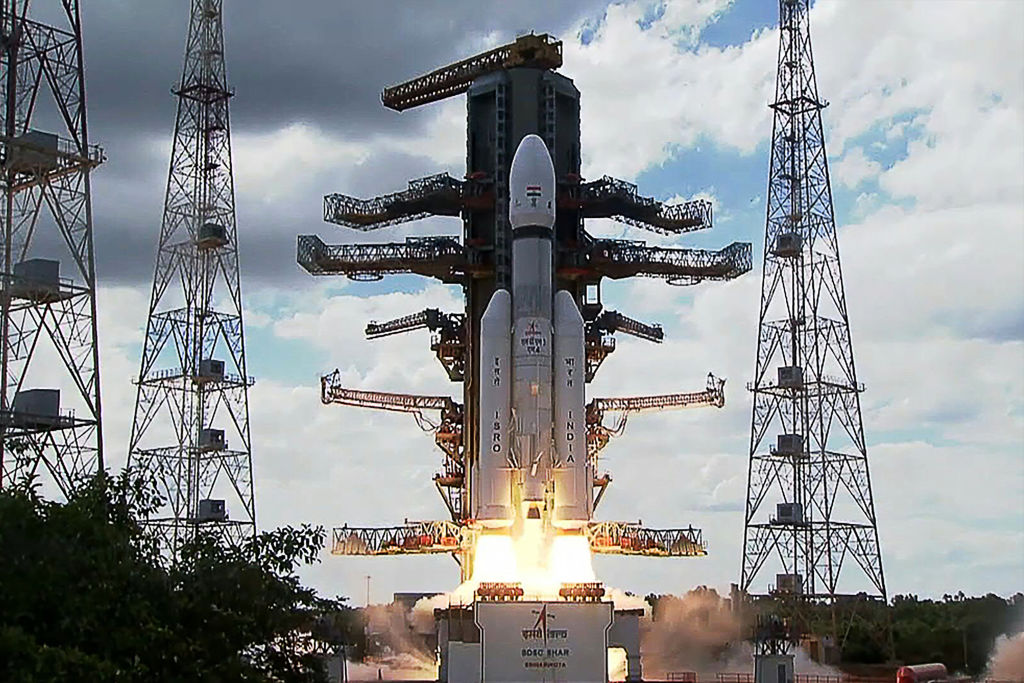
Our security depends more and more on space. Today’s militaries depend on space systems for operations on land or sea, in the air, or in many cases, in cyberspace. Space technologies are integral to our daily lives and to the functioning of global infrastructure making it imperative that the space domain is politically stable and accessible. The only way to ensure this is through strategic partnerships, and India and Australia have great potential to cooperate to advance their interests in several ways.
Space has become commercially competitive, with over two thirds of the approximately 8,500 operational satellites in orbit belonging to commercial entities. Most of those are US companies, making it hard for companies from other nations to compete.
The space domain is now a strategic domain politically and militarily contested. The most effective way to compromise an adversary’s eyes and ears is to target the space systems they depend upon. Threats to space systems come in various forms. The ability to interfere with any one of these technologies and the need to protect them leads to an escalatory trend in ‘counterspace technologies’. As more countries become active in space and seek to protect their assets, the space domain itself comes under threat.
The best way to respond to commercial and military contestation is to balance it with cooperation. Countries that cooperate in their space programs can leverage this to enhance their geopolitical influence. Australia and India have an underutilised potential as space partners, particularly when it comes to defence and security. As Australia and India become closer political, economic and security partners, there are many opportunities for cooperation on space technologies.
Opportunities to leverage existing civil space cooperation between the Indian Space Research Organisation and the Australian Space Agency, include facilitating collaborative technology development, and a ground station in Australia’s Cocos Islands to support India’s Gaganyaan human spaceflight missions.
In addition, Australia’s International Space Investment (ISI) fund looks to bring Indian and Australian researchers and industry partners together with $20.69 million in funding over four years. While the Fund is primarily aimed at civil space partnerships, the dual use nature of most space applications means that there are immediate security benefits as well. Earth observation satellites, for example, contribute to disaster and climate response, water management, agricultural planning and decision-making in many sectors, and also have applications for intelligence, surveillance and reconnaissance, maritime domain awareness and defence operations. High speed, secure satellite communications are critical for military operations and are integral to our national economies.
Our space capabilities can complement each other well. Australia has a strong heritage in space domain awareness (the ability to accurately track objects in orbit) and a workforce of defence space operators with experience in intelligence, communications and information warfare. Australia already has space data sharing agreements with the ‘Five Eyes Plus’ partners, which include France and Germany. Australia could offer its strengths to India as a reflection of our shared security interests in the region.
Laser communications are being developed in Australia through an optical ground station network to support Defence needs and NASA’s Artemis program to return astronauts to the Moon. Expanding this ground station network to India would provide secure, high-speed communications in the region, and strengthen the Defence partnership among our nations.
India has an outstanding launch capability and demonstrated its effectiveness with its recent Moon landing. This technological success expands India’s strategic influence. The Defence Space Research Agency has contributed to India’s rise as a space power, but both India and Australia need to better integrate their Defence and civil space agencies under national priorities. Australian Defence could be partnering with India on launch needs, and on developing robotics and AI needed for lunar activities, given the competition for lunar resources that will emerge in the next decade.
India also has a large constellation of Earth observation satellites. Australia may need to become a greater consumer of their services with cancellation of its National Space Mission for Earth observation.
Greater space cooperation can also contribute to our shared regional interests and our ability to influence global security issues. There has, for example, been a deadlock on space arms control for decades. Australia and India could potentially play a role in bridging that gap.
In August, the UN Open Ended Working Group on Reducing Space Threats (OEWG) failed to produce a consensus report on norms, rules and principles of responsible behaviour because Russia and its supporting nations to failed to agree on it. While most states wanted to see concrete outcomes, some, like India, remain ambivalent. Australia could work with India towards an agreement. The OEWG has also led to 35 countries making binding unilateral commitments not to test direct ascent anti-satellite weapons. They included Australia and key space partners to both Australia and India, such as the US, Germany, Japan, South Korea and New Zealand, but not India itself. A UN General Assembly resolution calling for a moratorium on such tests garnered further international support of 155 nations. Russia, China and their supporters voted against it. India chose a middle ground and abstained.
As a more multipolar global order evolves, middle and regional powers have ever greater influence in international affairs. If, for example, India were to support a moratorium, even without making a binding commitment not to undertake further tests, this would contribute enormously to greater space stability for the Indo-Pacific and the world.
While India’s civil and military space programmes are in many ways more advanced than Australia’s, neither nation can achieve their ambitions alone. By seeking to complement each other’s strengths in certain space technologies we can further our own interests and impact the policies, strategies and behaviours of other active space nations, and thus further influence regional stability.
This article was written as part of the Australia India Institute’s defence program undertaken with support from the Department of Defence. All views expressed in this article are those of the author only.

